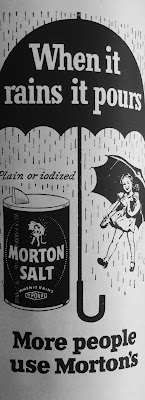 |
"A first lady chooses a universally flattering, wonderfully wearable coatdress of Ames wool. The narrow white tracing of trim is Angora. Dress also comes in red or black. Sizes 10 to 18;
about $40. Kay Wynne." |
Today I am sharing the fashions from the October 1952 Good Housekeeping magazine.
 |
| "She's so tiny she makes the average height look towering. She chooses long lines, scaled to her size details, something eye-catching close to her feet. Middy dress with cuffed hip line and neckline. In rayon and acetate crepe. Also green or back. Petite sizes 10 to 19. About $45" |
 |
| "She dresses in crepe-a triumphant revival this season. She loves the coatdress look, the pretty trim at throat and hip line. Onondaga acetate and rayon crepe. Also in mink or black. Sizes 10 to 20. Leonard Arkin. Hat by Betman." |
The lead article was fashion for The First Ladies, starting, "There's a first lady in every American home. She comes in assorted sizes, ages, and temperaments. She answers to such varied names as Mrs., Mom, and Darling."
 |
| "He's particularly partial to the deceptively simple cut of this shirtwaist dress, the very rich look of its bronze-colored fabric. And he likes the delicate detailing, the little tucks and collar and cuffs. It's of rayon brocade. Also in gold or pale blue. Sizes 10 to 16; about $50. Kasper for Penart Fashions." |
The fashions illustrated in the article were from B. Altman & Co., NY and Marshall Field & Co, Chicago.
 |
| "When she asks, "What shall I wear tonight?" he always requests the same dress--the one with the portrait neckline, the criss-cross trim, the shining star buttons. Tawny yarn-dyed acetate rayon taffeta. Also in rouge or slate blue. Sizes 10 to 18; about $45. Miguel Dorian for Arnold and Fox." |
"When a First Lady as a date to Meet Him at Five"...they suggest the coatdress pictured below.
 |
| "They're off to tea--he very proud, she very pretty in a coatdress of Bloomsburg acetate faille with revers faced in acetate and rayon satin. In black, brown, or navy. Sizes 10 to 20; about $40. Ben Barrack." |
 |
| "In larger sizes, she chooses a filigree of lace. Her figure is rounded and feminine. She elects to minimize her hips with a softly breaking skirt; to camouflage her short waist with long, smooth lines; to half-conceal her arms and shoulders with a dramatic bodice of Chantilly lace backed with a band of pastel acetate satin. The dress is acetate and rayon crepe. In black, gray, or sugar-brown. Sizes 14 1/2 to 24 1/2. About $40. Fashion Wearables by Mayda Williams." |
"The First Lady Pampers the Man in her Life," which according to this fashion advice means purchasing stripped shirts, argyle sweaters, and checked sportscoats.
And, of course, ironing those Arrow Shirts for "handsomer husbands."
"Shopping magic!" this ad starts, "my REALSILK nylons walk in the door."
Suncraft Shirts, "most versatile blouses in your wardrobe," pledged to iron "hanky fast."
The Good Housekeeping Fashions section also shared new sewing patterns from Simplicity.
 |
Simplicity coat 4021, skirt 4013, and blouse 4010
"We used Forstmann's new pebbly-surfaced wool coating in bright red for the skirt and coat. Blouse is of red and white Security wool jersey." |
"Make Much of Your Wardrobe," readers were advised.
 |
"Above. Pretty party dress cut in a flattering V neckline. We used a "Cromsepun" fabric by Ameritex in grey and black checked acetate taffeta brightened with Lurex. Simplicity Printed Pattern 4000.
Left: Button trimmed dress with a big bowed detachable dickey. We chose black and white pin-checked Botany worsted wool for our version, added smart stripes at the throat. Simplicity Printed Pattern 3994." |
 |
| Two versions of Simplicity Printed Pattern 4007 made in blue acetate rayon and wool faille by William Skinner. |
How were ladies making these fashions in 1952? With their Singer sewing machine and a GE steam iron.
The home seamstress had lots of La Mode buttons to chose from.
This roomy housecoat has HUGE pockets. Imagine what you could keep in them.
"Once in a blue moon, we run across a dress design that's becoming to practically everyone--the older woman as well as the younger person, the large figure as well as the slimmer one." Simplicity 3950 had a four-gore skirt and diagonally placed tucks for fullness over the chest. Sizes 12 to 44. Theirs was made in a sheer wool fabric of deep royal blue.
For $9 women could buy a Rite-Fit dress of the month.
One of the new fabrics was Celeanese, an acetate Tricocel knitted fabric, her shown in a peignoir and gown from Carter's selling at $15 for the set.
A lady needed shoes to complete her wardrobe.
And to protect her shoes, Rain Deers clear plastic boots.
Maternity fashions in nylon tricot from Kickernick included panties with elastic, expandable, shirring.
With swing coats this full, The First Lady could hide that baby bump for months.
How to dress the kids? The magazine had ads for that, too.
I hope you enjoyed this trip down 'memory lane.'































































